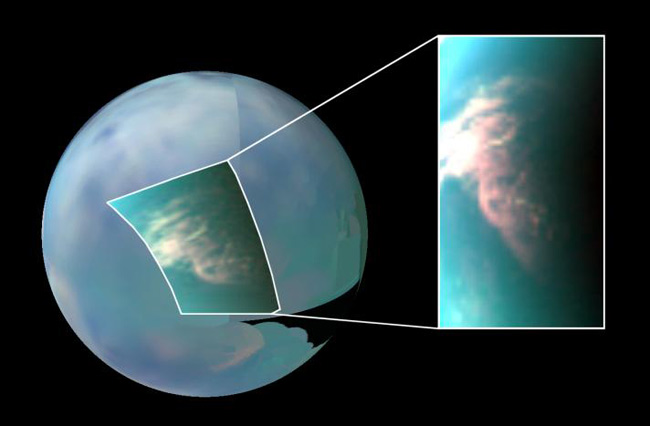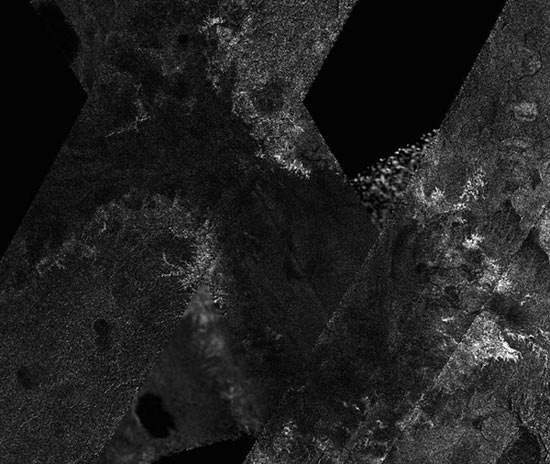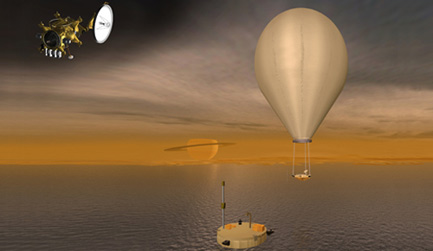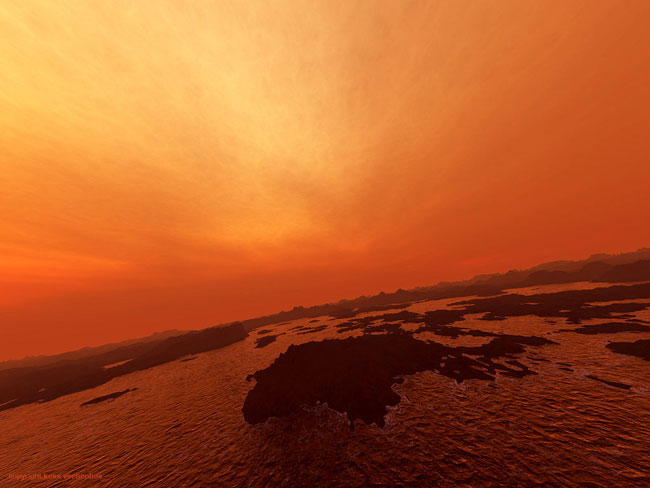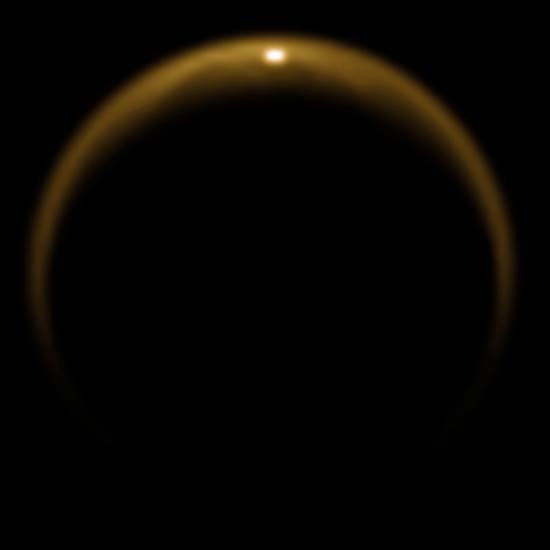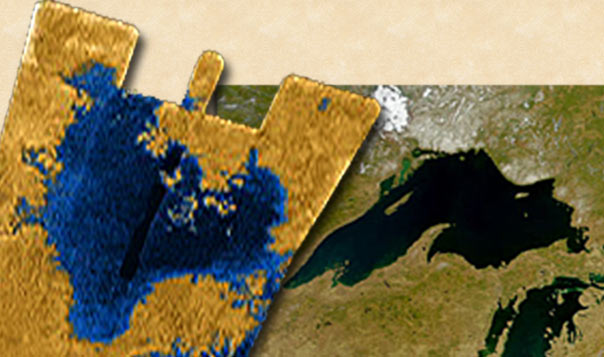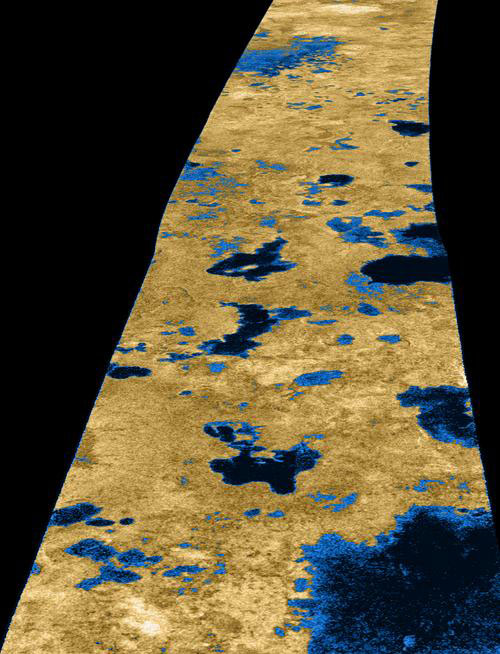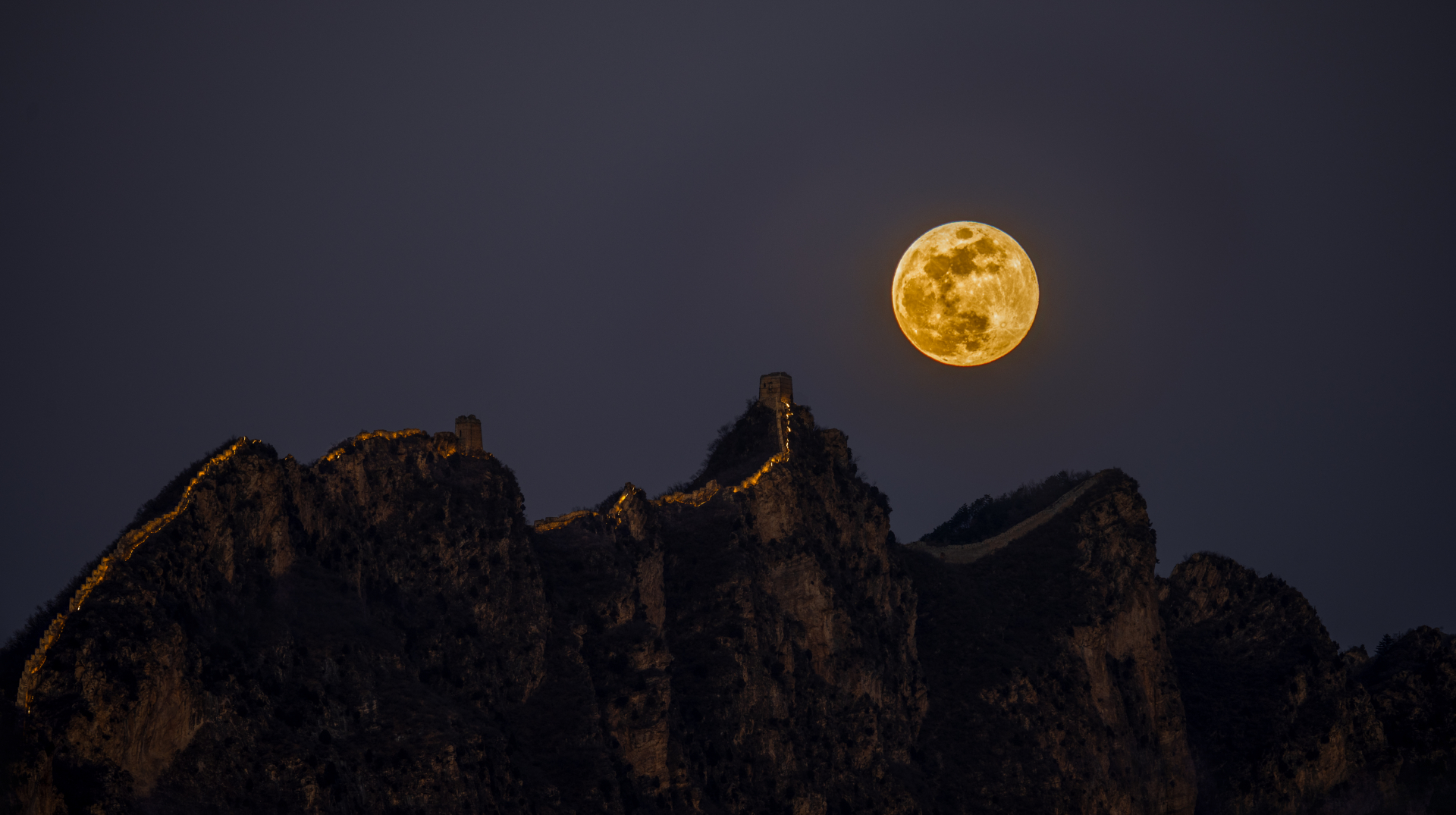Amazing Photos: Titan, Saturn's Largest Moon
Saturn Photographed with Four Moons
In this view, the giant orange moon Titan casts a large shadow onto Saturn's north polar hood. Below Titan, near the ring plane and to the left is the moon Mimas, casting a much smaller shadow onto Saturn's equatorial cloud tops. Farther to the left, and off Saturn's disk, are the bright moon Dione and the fainter moon Enceladus.
The Forecast on Titan: Pretty Darn Good
Clouds linger unexpectedly on Saturn's Moon Titan.
Titan: A World Much Like Earth
This mosaic of image swaths from Cassini's Titan Radar Mapper features a large dark region that has many characteristics in common with lakes, including its channels and interior, yet its differences distinguish it from other similar features. At the top (north), the feature has characteristics of a shoreline, with round bay-like margins and channels that drain into it; at left (west) and right (east) it is rimmed by bright, feathery, branching channel-like structures.
Tropical Storm Spotted on Saturn's Moon Titan
Gemini North infrared image of Saturn and Titan (at about 6 o'clock position), obtained on May 7, 2009.
Largest Lake on Saturn's Moon Titan Gets Close-Up
This image was taken on June 07, 2010 and received on Earth June 07, 2010. The camera was pointing toward Titan at approximately 1,110,349 kilometers (690,000 miles) away, and the image was taken using the CL1 and CB3 filters. This image has not been validated or calibrated. A validated/calibrated image will be archived with the NASA Planetary Data System in 2011.
Nuclear-Powered Robot Ship Could Sail Seas of Titan
An artist concept of proposed mission to the Saturn system, the Titan Saturn System Mission, which includes a mothership, lake lander and a balloon probe.
Saturn's Eccentric Orbit Could Explain Moon's Lopsided Lakes
A possible view of the Titan surface with a methane sea. There's still a lot of guessing whether Titan has a lake or lakes which contain liquid fluids like methane or hydrocarbon. If they exist they will not be larger than a few kilometers as the first detailed photographs of the Cassini show us (fall/winter 2005). Terrain made with Cassini radar data. (made with the grey scale map I made from the 'shoreline' Titan radar map).
Breaking space news, the latest updates on rocket launches, skywatching events and more!
Sunlight Glints off Liquid Lake on Titan
This image, obtained using Cassini's Visual and Infrared Mapping Spectrometer (VIMS), shows the first observed flash of sunlight reflected off a lake on Saturn's moon Titan.
Scientists Cook Up Saturn Moon Cocktail on Earth
This feature on Titan is at least 100,000 square kilometers (39,000 square miles), which is greater in extent than Lake Superior (82,000 square kilometers or 32,000 square miles), which is one of Earth’s largest lakes.
Can Life on Titan Thrive Without Water?
The irregular black shapes in this Cassini radar image of Titan's northern polar region are believed to be liquid methane-ethane lakes.

Space.com is the premier source of space exploration, innovation and astronomy news, chronicling (and celebrating) humanity's ongoing expansion across the final frontier. Originally founded in 1999, Space.com is, and always has been, the passion of writers and editors who are space fans and also trained journalists. Our current news team consists of Editor-in-Chief Tariq Malik; Editor Hanneke Weitering, Senior Space Writer Mike Wall; Senior Writer Meghan Bartels; Senior Writer Chelsea Gohd, Senior Writer Tereza Pultarova and Staff Writer Alexander Cox, focusing on e-commerce. Senior Producer Steve Spaleta oversees our space videos, with Diana Whitcroft as our Social Media Editor.

